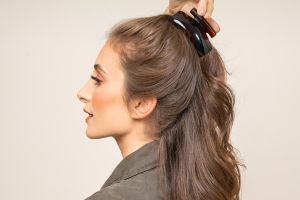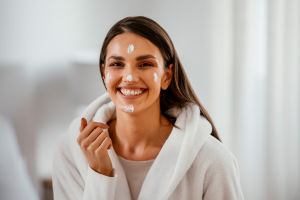Have you ever wondered how a simple makeup style suddenly becomes a worldwide sensation overnight? The answer often lies in the powerful influence of social media.
Platforms like Instagram, TikTok, and YouTube have transformed the way makeup trends emerge and spread, connecting millions of people and shaping beauty culture in unprecedented ways.
Let's dive into how social media has revolutionized makeup trends and what this means for beauty enthusiasts everywhere.
Social Media as a Trend Accelerator
Before social media, makeup trends often developed slowly, influenced primarily by celebrities, fashion shows, or magazines. Today, trends can explode in popularity within days thanks to viral posts and influencer endorsements. When a makeup artist or beauty influencer posts a new look, it reaches thousands or even millions almost instantly.
This rapid spread allows trends to evolve quickly. For example, the "glass skin" trend from Korea became a global sensation largely through social media exposure, inspiring countless beauty tutorials and product launches. Social media accelerates the lifecycle of trends, making the beauty world more dynamic and fast-paced than ever.
The Power of Influencers and Content Creators
Influencers play a critical role in popularizing makeup styles. These individuals often build large followings by sharing tutorials, reviews, and creative makeup looks that their audiences trust. Their ability to showcase products and techniques in real-time creates a personal connection that traditional advertising cannot match.
Furthermore, influencers come from diverse backgrounds, offering a wider range of beauty standards and styles. This diversity encourages inclusivity in makeup trends, celebrating different skin tones, textures, and identities. The influencer economy has become a driving force behind many new makeup launches and trends, as brands often collaborate directly with creators to reach their audience.
Democratizing Beauty: Trends for Everyone
Social media has democratized beauty by making trends accessible to everyone, not just industry insiders or celebrities. Anyone with a smartphone can share their style, participate in challenges, or learn new techniques through free tutorials.
This openness has led to the rise of DIY makeup culture and experimentation. People feel empowered to try bold colors, unique designs, or natural looks based on what they see online. The feedback loop between creators and followers also means trends can be more community-driven rather than dictated solely by major brands.
How Algorithms Influence What You See
Have you noticed how your social media feeds show makeup looks that seem tailored just for you? That's thanks to complex algorithms that analyze your preferences, interactions, and searches. These algorithms curate content to keep you engaged, often promoting the most popular or trending makeup posts.
While this personalization can help you discover relevant content quickly, it also means you might see similar styles repeatedly, which can both reinforce trends and limit exposure to less mainstream ideas. Understanding how these algorithms work can help you explore more diverse makeup inspiration beyond the most viral posts.
The Rise of Video Tutorials and Short-Form Content
Video platforms like TikTok and YouTube have transformed makeup learning by offering quick, visually engaging tutorials. Short clips demonstrating step-by-step application, product recommendations, or transformation looks make makeup more approachable and entertaining.
These videos often focus on real-time results and relatable creators, making it easier for viewers to replicate trends at home. The viral nature of video also helps unusual or niche makeup styles gain popularity rapidly, adding to the variety of trends available.
Challenges and Considerations
Despite its many benefits, social media's influence on makeup trends also brings challenges. The pressure to keep up with constantly changing styles can be overwhelming and expensive. Additionally, the idealized images sometimes presented online may set unrealistic beauty standards, affecting users' self-esteem.
Experts recommend approaching social media makeup trends with balance: enjoy the creativity and inspiration but remember that makeup is personal and should reflect your unique style and comfort. Being mindful of product ingredients and skin health when trying new looks is equally important.
Expert Insight: Beauty Industry Perspectives
According to Dr. Jane Thompson, a dermatologist specializing in cosmetic science, "Social media has opened up unprecedented access to beauty knowledge, but it also increases the risk of misinformation. Users should rely on credible sources and pay attention to how products interact with their skin type."
Market analyst Sarah Lee explains, "Companies are leveraging social media insights to forecast and release trends at a quicker pace. This creates a dynamic loop where consumer reactions directly influence product design, enhancing responsiveness and fostering innovation in the beauty industry."
Looking Ahead: The Future of Makeup Trends on Social Media
As technology advances, social media's role in makeup trends will continue to grow. Virtual try-on tools, augmented reality filters, and AI-powered recommendations are already changing how people experiment with makeup online.
This evolution promises even more personalized and interactive beauty experiences, allowing users to explore styles without commitment before purchasing. Social media will remain a powerful platform that both reflects and drives the ever-changing world of makeup trends.
What's your favorite makeup trend you discovered on social media? Have you ever tried replicating a viral look? Share your experience and let's explore how these digital platforms continue to shape our beauty routines together!


